Related Research Articles

Swansea is a coastal city and the second-largest city of Wales. It forms a principal area, officially known as the City and County of Swansea.

Port Talbot is a town and community in the county borough of Neath Port Talbot, Wales, situated on the east side of Swansea Bay, approximately eight miles from Swansea. The Port Talbot Steelworks covers a large area of land which dominates the south east of the town. It is one of the biggest steelworks in the world, but has been under threat of closure since the 1980s. The population was 31,550 in 2021, comprising about a fifth of the 141,931 population of Neath Port Talbot.
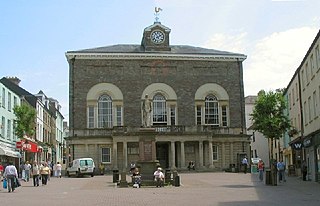
Carmarthenshire is a county in the south-west of Wales. The three largest towns are Llanelli, Carmarthen and Ammanford. Carmarthen is the county town and administrative centre. The county is known as the "Garden of Wales" and is also home to the National Botanic Garden of Wales.
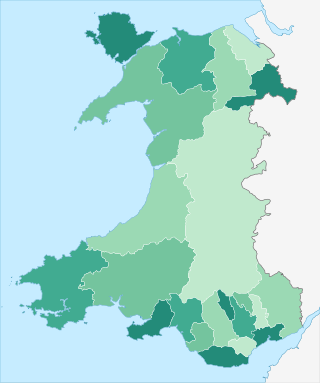
Since 1 April 1996, Wales has been divided into 22 single-tier principal areas, styled as counties or county boroughs for local government purposes. The elected councils of these areas are responsible for the provision of all local government services, including education, social work, environmental protection, and most highways. Below these there are also elected community councils to which responsibility for specific aspects of the application of local policy may be devolved. The last set of local elections in Wales took place in 2022, with the next due to take place in 2027.

Neath is a market town and community situated in the Neath Port Talbot County Borough, Wales. The town had a population of 50,658 in 2011. The community of the parish of Neath had a population of 19,258 in 2011. Historically in Glamorgan, the town is located on the River Neath, seven miles east-northeast of Swansea.

Neath Port Talbot is a county borough in the south-west of Wales. Its principal towns are Neath, Port Talbot, Briton Ferry and Pontardawe. The county borough borders Bridgend County Borough and Rhondda Cynon Taf to the east, Powys and Carmarthenshire to the north; and Swansea to the west.
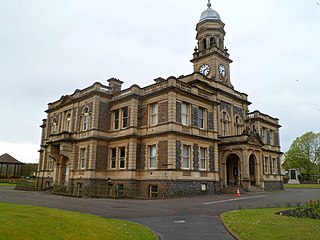
Llanelli is a market town and community in Carmarthenshire and the preserved county of Dyfed, Wales. It is located on the Loughor estuary and is the largest town in the county of Carmarthenshire. The town is 11 miles (18 km) north-west of Swansea and 12 miles (19 km) south-east of Carmarthen. The town had a population of 25,168 in 2011, estimated in 2019 at 26,225. The local authority was Llanelli Borough Council when the county of Dyfed existed, but it has been under Carmarthenshire County Council since 1996.
Sir Terence Hedley Matthews is a Welsh-Canadian business magnate, serial high-tech entrepreneur, and Wales' first billionaire. He was the richest man in Wales until 2012, when he was surpassed by Sir Michael Moritz.
The South Wales Evening Post is a tabloid daily newspaper distributed in the South West region of Wales. The paper has three daily editions – Swansea; Neath and Port Talbot; and Carmarthenshire – and is published by Media Wales, part of the Reach plc group. The current editor is Jonathan Roberts. As the name suggests, it had previously been an evening paper, but later became a morning daily.

Betws is a small village and community on the River Amman in Carmarthenshire, Wales, some 15 miles north of Swansea; it is part of the ecclesiastical parish of Betws and Ammanford, and the urban area of Ammanford. The nearby mountain, at the western end of the Black Mountain, is named after the village, and has a large area of common land.
The M4 corridor is an area in the United Kingdom adjacent to the M4 motorway, which runs from London to South Wales. It is a major high-technology hub. Important cities and towns linked by the M4 include London, Slough, Bracknell, Maidenhead, Reading, Newbury, Swindon, Bath, Bristol, Newport, Cardiff, Port Talbot and Swansea. The area is also served by the Great Western Main Line, the South Wales Main Line, and London Heathrow Airport. Technology companies with major operations in the area include Adobe, Amazon, Citrix Systems, Dell, Huawei, Lexmark, LG, Microsoft, Novell, Nvidia, O2, Oracle, Panasonic, SAP, and Symantec.
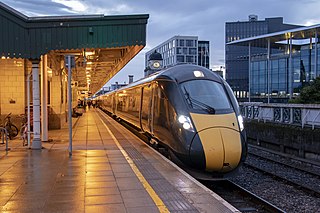
Transport in Wales is heavily influenced by the country's geography. Wales is predominantly hilly or mountainous, and the main settlements lie on the coasts of north and south Wales, while mid Wales and west Wales are lightly populated. The main transport corridors are east–west routes, many continuing eastwards into England.

South West Wales is one of the regions of Wales comprising the unitary authorities of Swansea, Neath Port Talbot, Carmarthenshire and Pembrokeshire.
The City and County of Swansea is an urban centre with a largely rural hinterland in Gower; the city has been described as the regional centre for South West Wales. Swansea's travel to work area, not coterminous with the local authority, also contained the Swansea Valley in 1991; the new 2001-based version merges the Swansea, Neath & Port Talbot, and Llanelli areas into a new Swansea Bay travel to work area. Formerly an industrial centre, most employment in the city is now in the service sector.
Menter Iaith is a community-based organisation which works to raise the profile of the Welsh language in a specific area. Each local Menter Iaith receives a basic grant from the Welsh Language Board, as well as financial support from a number of other sources, to work with individuals, organisations, and local business to promote the use of Welsh in its area.
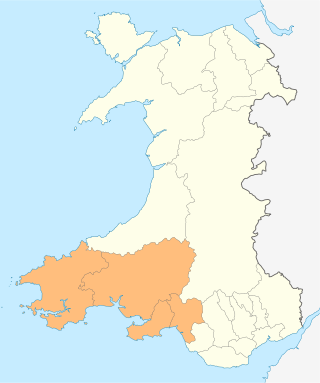
The Swansea Bay City Region, is a city region in Wales. It is a partnership between the local authorities of Carmarthenshire, Neath Port Talbot, Pembrokeshire and Swansea, local businesses in southwest Wales and other organisations with the support of the Welsh Government. The Swansea Bay City Region is coterminous with the area defined as South West Wales.

The Swansea Bay and West Wales Metro, or simply the Swansea Bay Metro is a proposed enhancement of railways, buses and active travel around the Swansea Bay and South West Wales areas of South Wales.The project could take up to 10 years to complete.

Wales has traditionally been divided into a number of ambiguous and ill-defined areas described as "regions", reflecting historical, geographical, administrative, cultural and electoral boundaries within the country. Presently, the most common form of division of Wales into "regions" has been using cardinal and intercardinal references: north or south-west for example. None of the variously described "regions" have official status or defined boundaries; neither is there a fixed number of regions. Various organisations use different regions and combinations of regions for their individual purposes. This includes devolved institutions, such as Visit Wales, Natural Resources Wales, and the Welsh Government itself, using different sets of Wales' regions. Wales is most commonly sub-divided into between two and four regions, with a North–South divide, and North, Mid, South East and South West division being common. This article lists the various terms applied to be the "regions of Wales" and the regions used by various organisations.

Regional economy in Wales is centred on four regional economic boards in Wales. Each board oversees a city or growth deal, signed between 2016 and 2022, lasting 10–15 years. Two of the deals are city deals signed and proposed by their respective economic boards, and their areas are described as "city regions"; the Cardiff Capital Region and Swansea Bay City Region. Whereas in North Wales, the North Wales Economic Ambition Board negotiated a North Wales growth deal signed in 2020, and in Mid Wales, the Growing Mid Wales Partnership, led negotiations for a Mid Wales growth deal signed in 2022. The programmes are based on the City deal and Growth deal initiatives set up by the Coalition UK Government in 2012, to promote the decentralisation of the UK economy, by stimulating local economic growth.
References
- ↑ Defining the boundaries of the Wales Spatial Plan areas for statistical data analysis
- 1 2 Sustainable Regeneration Framework Swansea Bay: The Waterfront and Western Valleys Spatial Plan Area
- ↑ Revision of Travel to Work Areas
- ↑ Demographic data summary: Swansea Bay (a)
- ↑ WDA: South West Wales Key Sites
- ↑ source: http://www.walesonline.co.uk/news/wales-news/2012/07/11/report-calls-for-city-regions-around-cardiff-and-se-wales-and-swansea-bay-91466-31373952/
- ↑ Report recommends Swansea Bay gets City Region status
- ↑ BBC News - Swansea Bay city region launched to boost economy
- ↑ "Swansea Bay City Region". Welsh Government. February 16, 2015. Archived from the original on June 29, 2015. Retrieved June 26, 2015.
- ↑ "Celtic Manor's Sir Terry Matthews is Swansea region chief". BBC News. September 24, 2014. Retrieved June 26, 2015.
- ↑ "Sir Terry Matthews to use 'global network' to boost region investment". BBC News. September 25, 2014. Retrieved June 26, 2015.
- ↑ "Sir Terry Matthews holds first regeneration board meeting". BBC News. November 19, 2014. Retrieved June 26, 2015.
- ↑ "Sir Terry Matthews revealed as the new chair of the Swansea Bay City Region". Media Wales. September 24, 2014. Retrieved June 26, 2015.